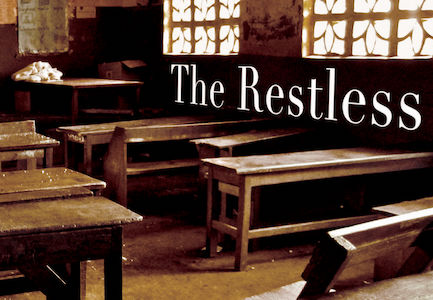The Restless by Gerty Dambury (The Feminist Press, 2018). Translated by Judith G. Miller
Gerty Dambury’s The Restless, translated from the French by Judith G. Miller, takes place in her native Guadeloupe, a Caribbean island that has been an overseas department of France since just after the second World War. Guadeloupeans of different ages, genders, and social statuses narrate the events surrounding the violent confrontation between the construction workers’ union and the French prefecture that took place on May 26th, 1967. On this day, as workers gathered outside the building where the union negotiated wage raises with business owners, the French prefect ordered troops to fire on the crowd, and the situation degenerated from there. The lynchpin of the novel is a little girl, Émilienne, who’s waiting for her father to come home so he can explain to her why her teacher has disappeared. While she waits in the courtyard of her home, a chorus of her family members and neighbors (both living and dead) contextualize the two absences and how they relate to the broader experiences of the island.
Though Émilienne acts as the focalizer, the chief narrators are her eight brothers and sisters, who speak with a more-or-less undifferentiated voice. They proclaim themselves the “callers” of the story, which they structure after the Caribbean quadrille, a sort of creolized version of a French square-dance. The caller of the quadrille is conventionally singular and male, but Émilienne’s siblings are happy to innovate. They often hand over the reins to guest narrators, who act as temporary callers. Each section of the narrative has a primary caller, though others often chime in, and corresponds to one of the four quadrille figures in rhythm and mood. Émilienne’s siblings helpfully guide the unfamiliar reader’s expectations of the musical conventions at the beginning of each figure/chapter. The multivocality and musicality of the text, two of its most distinguishing features, could have posed a challenge to Miller’s translation. The differences between the figures and the characters’ voices are discussed more than demonstrated.
The plot of the novel has two interwoven threads elaborated via the narrative device of the quadrille. On one hand, Émilienne waits for her father (the owner of a construction company) to come home, because she wants him to explain to her why her teacher (a communist) has disappeared and to make sense of the tension in the streets. Émilienne is the baby of the large family, and her innocence serves to emphasize the maturity of the questions she’s forced to confront, and the bravery with which she does so. She’s known as a strange but loveable child, adept at communicating with the dead and fond of standing in front of the mirror in her blue bathroom and repeating the phrase, “I have no name, I have no face.” This mantra is appropriate not only to her character, but also to her role in the narrative. Like the other characters, she herself isn’t nearly as important as the way in which her combination of qualities refract the plot points and other characters to help direct the reader’s interpretations.
The second thread follows the confrontation between the construction workers’ union and the French prefecture, the conditions that gave rise to it, and the fallout. Each character shares their perspective while consciously representing the segment of society to which they belong. Nono, who died at ninety-eight, keeps the memories that help illuminate the events of the present—memories of a harsher past, especially for a poor woman like herself. Émilienne’s other deceased neighbor, Hilaire, a gay man, speaks as the outcast, the victim of the ugliest impulses of human nature. Guy-Albert, an employee of Émilienne’s father’s construction business is “a simple honest man. A poor man among poor men.” His goodness, his endurance in the face of bad luck and oppression, attracts the reader’s sympathies firmly to the side of the union, against the French prefecture who fired the first shots against him and his colleagues. Collectively, the characters illustrate the fabric of their society, through which the shockwaves of the confrontation ripple.
Dambury is a feminist, activist, and artist at once and her novel showcases all three capacities. In the Guadeloupean society of The Restless, agency and justice are things to be claimed, not bestowed. For Dambury and many others, the events of May 1967, kept out of the public discourse by the authorities for decades, were traumatizing at the personal, family, and national levels. By giving voice to the underrepresented in her society, she does her part to bring about a sort of justice—or at least catharsis. Those who seek to profit from the existing power structure are written as everything from cruel to cowardly, but never irredeemable. Those who speak out against oppression, especially women, form the foundation of a better future.
Lindsay Semel is the Editor-at-Large for Portugal. She recently earned a BA in Comparative Literature and Arabic Language and Literature, and works alternately in education, sustainable agriculture, and freelance editing. She also enjoys yoga.
*****
Read more reviews from Asymptote:

